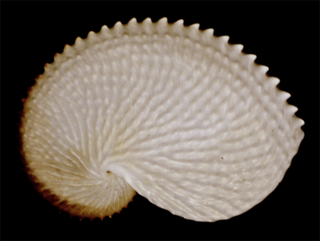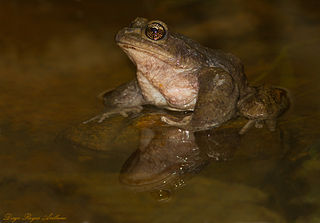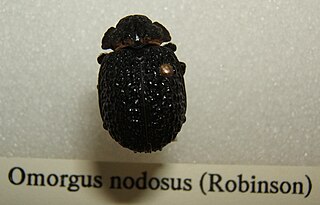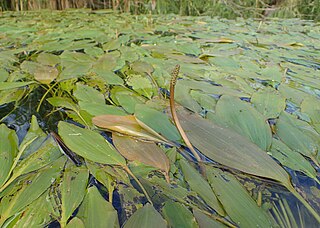
Argonauta nodosus [previously known as Argonauta nodosa], also known as the knobby or knobbed argonaut, is a species of pelagic octopus. The female of the species, like all argonauts, creates a paper-thin eggcase that coils around the octopus much like the way a nautilus lives in its shell. The shell is usually approximately 150 mm in length, although it can exceed 250 mm in exceptional specimens; the world record size is 292.0 mm. A. nodosus produces a very characteristic shell, which is covered in many small nodules on the ridges across the shell, hence the specific epithet nodosus and common name. These nodules are less obvious or even absent in juvenile females, especially those under 5 cm in length. All other argonaut species have smooth ridges across the shell walls.

Protoreaster nodosus, commonly known as the horned sea star or chocolate chip sea star, is a species of sea star found in the warm, shallow waters of the Indo-Pacific region. They are sometimes seen in the marine aquarium trade or dried and sold as curios.
Dichelobacter nodosus, formerly Bacteroides nodosus, is a Gram-negative, obligate anaerobe of the family Cardiobacteriaceae. It has polar fimbriae and is the causative agent of ovine foot rot as well as interdigital dermatitis. It is the lone species in the genus Dichelobacter.

Alsodes nodosus is a species of frog in the family Alsodidae endemic to central Chile; records from Argentina are not considered valid.

Omorgus nodosus is a beetle of the family Trogidae.

Aquayamycin is an anthraquinone derivative. It is an inhibitor of the enzyme tyrosine hydroxylase.
Liniaxis is a genus of medium-sized sea snails, marine gastropod mollusks in the subfamily Coralliophilinae, the coral snails, within the family Muricidae, the murex snails and rock snails.

Potamogeton nodosus is a species of aquatic plant known by the common names longleaf pondweed and Loddon pondweed. It is native to Eurasia and the Americas, where it is widespread and can be found in water bodies such as ponds, lakes, ditches, and streams. This is a perennial herb producing a thin, branching stem easily exceeding a meter in maximum length. The submerged leaves are linear to widely lance-shaped and up to 15 by 4 centimetres in length and width, respectively, while the floating leaves achieve shorter maximum lengths and are ovate or elliptic. Both floating leaves and submerged leaves are borne on long petioles, a distinguishing characteristic. The inflorescence is a spike of many small flowers arising from the water on a peduncle.

Mipus is a genus of sea snails, marine gastropod mollusks in the subfamily Coralliophilinae of the family Muricidae, the murex snails or rock snails.

Nodipecten nodosus, or the lion's paw scallop, is a species of bivalve mollusc in the family Pectinidae. It can be found along the Atlantic coast of North America, ranging from Cape Hatteras to the West Indies, including Brazil and Bermuda.
Streptomyces nodosus is a bacterial species in the genus Streptomyces.
Acanthocinus elegans is a species of longhorn beetles of the subfamily Lamiinae. It was described by Ludwig Ganglbauer in 1884, and is endemic to Iran. The beetles live approximately one year, and inhabit deciduous trees.
Acanthocinus henschi is a species of longhorn beetles of the subfamily Lamiinae. It was described by Reitter in 1900, and is known from Austria, Croatia, Italy, and Macedonia. The beetles measure 7-11 millimetres in length, and live for approximately 1–2 years. They inhabit trees in the species Pinus nigra.
Acanthocinus leechi is a species of longhorn beetles of the subfamily Lamiinae. It was described by Lawrence S. Dillon in 1956.

Acanthocinus obliquus is a species of longhorn beetle of the subfamily Lamiinae. It was described by John Lawrence LeConte in 1862.

Acanthocinus princeps, the ponderosa pine bark borer, is a species of longhorn beetle of the subfamily Lamiinae. It was described by Francis Walker in 1866.

Acanthocinus pusillus is a species of longhorn beetles of the subfamily Lamiinae. It was described by William Kirby in 1837.
Symphyletes nodosus is a species of beetle in the family Cerambycidae, and the only species in the genus Symphyletes. It was described by Newman in 1842.
Lamprochernes nodosus is a species of arachnid belonging to the family Chernetidae.











